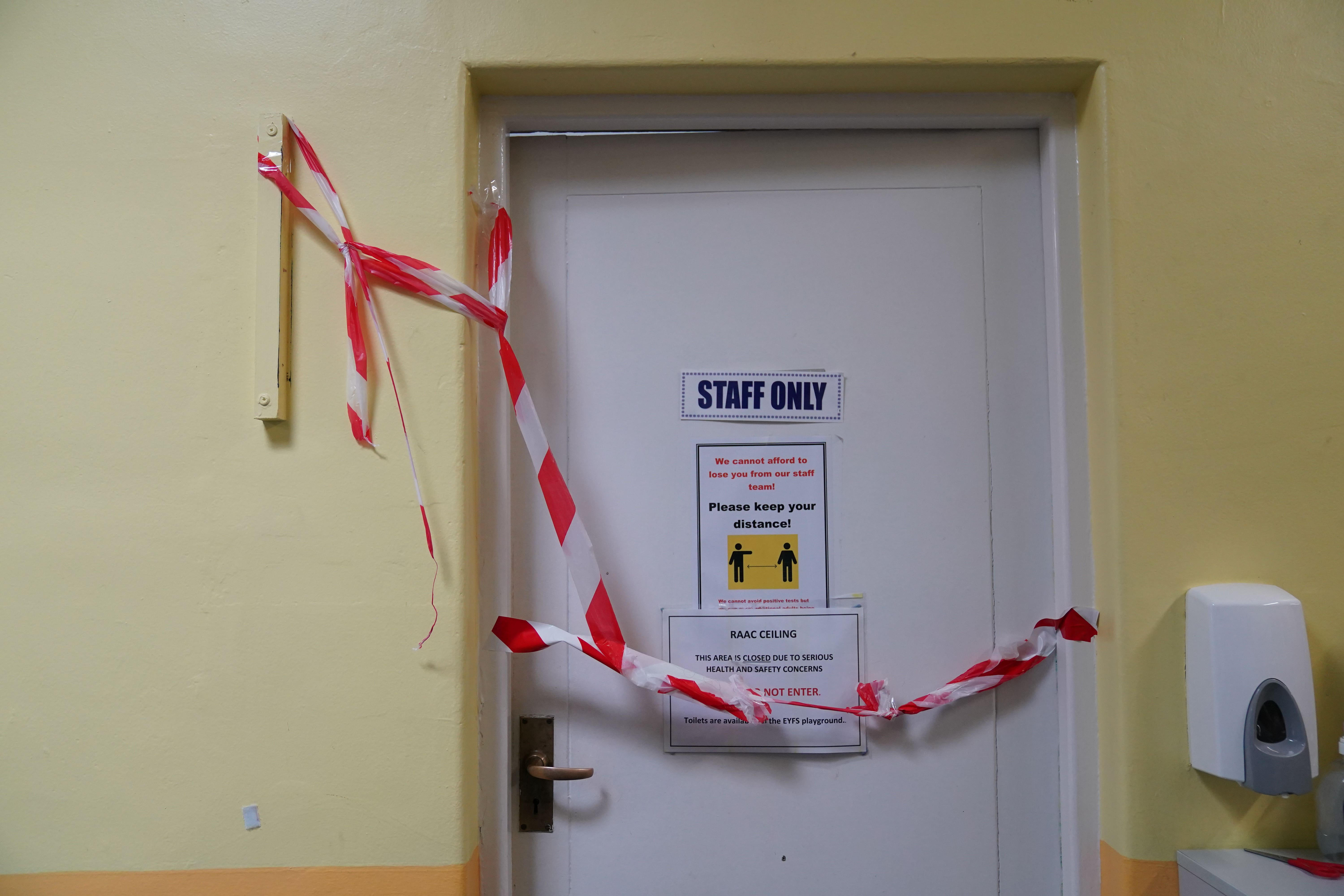Pandemic-style learning should last days, not weeks, amid school closures – DfE
The Department for Education said it was working with education leaders to make sure remote lessons are limited.

Your support helps us to tell the story
From reproductive rights to climate change to Big Tech, The Independent is on the ground when the story is developing. Whether it's investigating the financials of Elon Musk's pro-Trump PAC or producing our latest documentary, 'The A Word', which shines a light on the American women fighting for reproductive rights, we know how important it is to parse out the facts from the messaging.
At such a critical moment in US history, we need reporters on the ground. Your donation allows us to keep sending journalists to speak to both sides of the story.
The Independent is trusted by Americans across the entire political spectrum. And unlike many other quality news outlets, we choose not to lock Americans out of our reporting and analysis with paywalls. We believe quality journalism should be available to everyone, paid for by those who can afford it.
Your support makes all the difference.Pandemic-style learning should last “days, not weeks,” the Government has said, after concerns about lightweight concrete forced classrooms to shut just before the new term.
The Department for Education (DfE) said it was working with education leaders to make sure remote lessons are limited after more than 100 affected buildings were told to fully or partially close.
In guidance published on Thursday, it recommended using nearby schools, community centres or an “empty local office building” for the “first few weeks” while structural supports are installed to mitigate the risk of collapse.
Schools were told moving to remote education should be considered only as a “last resort and for a short period”.
In a statement on Saturday, the DfE said: “We are incredibly grateful to school and college leaders for their work with us at pace to make sure that where children are affected, disruption is kept to a minimum, and in the even rarer cases where remote learning is required, it is for a matter of days not weeks.”
Education Secretary Gillian Keegan will inform Parliament next week “of the plan to keep parents and the public updated on the issue”, it said.
Ministers are facing calls for transparency over which schools are affected by the existence of the concrete, which is prone to collapse, and the extent to which it may be leaving other public buildings at risk.
The Government previously said it will publish a list of schools “in due course”, but has not given a timeframe.
Experts have warned that the crisis over Raac could extend beyond the education sector – with healthcare settings, courts and offices also potentially at risk.
Opposition parties have criticised the Government for not acting sooner, with Labour demanding an “urgent audit” on the impact of the material across the rest of the public sector estate.
Chairwoman of Parliament’s Public Accounts Committee Dame Meg Hillier warned Raac is just “the tip of the iceberg” of a crumbling school estate, describing the state of some public buildings was “jaw-dropping”.
Writing in The Times, the Labour MP said she had visited a hospital where heavier patients had to be treated on the ground floor due to safety risks.
Some 104 schools and colleges were told by the Department for Education to partially or fully shut buildings just as pupils prepare to return after the summer holidays.
Though not confirmed, it is estimated that around 24 schools in England have been told to close entirely because of the presence of Raac, the PA news agency understands, and schools minister Nick Gibb has admitted more could be asked to shut classrooms.
Mr Gibb said that a collapse of a beam that had been considered safe over the summer sparked an urgent rethink on whether buildings with the aerated concrete could remain open.
But the problem could be far wider, with other buildings at risk of sudden collapse if Raac is not removed, specialists said.
Dame Meg questioned “why it has been left to deteriorate for so long” while millions of pounds are being spent on temporary measures to mitigate the risk.
“In both schools and hospitals, there hasn’t been enough money going into buildings and equipment,” she told Times Radio.
She said the costs of working around the problem – by using props to support existing structures and conducting surveys on Raac-affected areas – were “eye-watering and wasteful”.
Raac is a lightweight building material which was used up until the mid-1990s. The DfE was told of the issues potentially caused by Raac in 2018.
NASUWT teaching union official Wayne Bates said the problem within schools could take years to fix, and it “beggars belief” that the prospect of buildings collapsing is even being discussed.
“There’s a huge question mark about what the scale of this problem is,” he said.
The DfE insisted it had been clear since last week about the number of schools “immediately impacted” by Raac.
“It is vital that schools are given time to inform parents and consider their next steps, with extensive support from our caseworkers, before the list of affected schools is published,” a spokesperson said.
“Fifty-two of the 156 Raac cases identified already have mitigations in place, and while some of the remaining projects will be more complex, many will range from just a single building on a wider estate, down to a single classroom.”